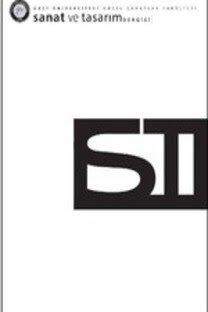Tasarım Sürecinde Eskiz ile Biçim-İçerik Sorgulama ve Çözümlemeleri: Bir Durum Analizi
-
-
-,
___
- Akin, O. (1990). Necessary Conditions for Design Expertise and Creativity. Design Studies 11, 107-113
- Brooker, G. ve Stone, S. (2011). İç Mekân Tasarımı Nedir? İstanbul: Yapı Endüstri Merkezi Yayınları.
- Copans, R. ve Neumann, S. (Yapımcı, Senarist, Yönetmen). (2003). Baukunst: Das
- Jüdiche Museum in Berlin. France;-. Gero, J. S. (1999). Constructive memory in Design Thinking. Design Thinking Research
- Symposium: Design Representation, 29-35. Goldsmith, G. (1994). On Visual Design Thinking: The Vis Kids of Architecture. Design Studies 15, 158-174
- İnceoğlu, N. (2012). Eskizler, Çizerek Düşünme Düşünerek Çizme. İstanbul: Nemli Yayıncılık.
- Laseau, P. (2001). Graphic Thinking for Architects & Designers. Canada: John Wiley & Sons, Inc.
- Lawson, B. (1990). How Designers Think?. Butterworth Architecture, Oxford UK
- Libeskind, D. (1991). Daniel Libeskind: Countersign. London: Academy Editions.
- Libeskind, D. (1997). Radix-Matrix: Architecture and Writings. Munich, New York: Prestel.
- Pallasmaa, J. (2009). The Thinking Hand Existential and Embodied Wisdom in
- Architecture. West Sussex, UK: John Wiley & Sons Ltd. Steadman, P. (1972). The Evolution of Design: Biological Analogy in Architecture and the Applied Arts. Cambridge University Press, Cambridge UK
- Young, J. E. (2000). Daniel Libeskind’s Jewish Museum in Berlin: The Uncanny Arts of
- Memorial Architecture. Jewish Social Studies, 6.2, 1-23. İnternet Kaynakları İnternet: Studio Daniel Libeskind. (2011). http://daniel-libeskind.com/projects/ chamber-works/drawings adresinden 4 Kasım 2012 tarihinde alınmıştır.
- İnternet: Wilks. http://sfac.wustl.edu adresinden 10 Eylül 2012 tarihinde alınmıştır. Görsel Kaynakları
- Akcan, E. (2010). Apology and Triumph: Memory Transference, Erasure and Rereading of the Berlin Jewish Museum. New German Critique, 37.2, 153–179.
- Copans, R. ve Neumann, S. (Yapımcı, Senarist, Yönetmen). (2003). Baukunst: Das
- Jüdiche Museum in Berlin. France. Doğan, F. ve Neressian, N. J. (2012). Conceptual Diagrams in Creative Architectural
- Practice: The Case of Daniel Libeskind’s Jewish Museum. Architectural Research Quarterly, Cambridge University Press, 16.1, 15–27. Libeskind, D. (1991). Daniel Libeskind: Countersign. London: Academy Editions.
- Studio Daniel Libeskind. (2011). http://daniel-libeskind.com/projects/chamber- works/drawings adresinden 4 Kasım 2012 tarihinde alınmıştır.
- ISSN: 1308-2264
- Yayın Aralığı: 2
- Başlangıç: 2015
- Yayıncı: Ankara Hacı Bayram Veli Üniversitesi
Tasarım Sürecinde Eskiz ile Biçim-İçerik Sorgulama ve Çözümlemeleri: Bir Durum Analizi
E-Kitaplarda Tipografik Tasarım Önerileri
Orhan Peker'in Resimlerinde Lekeci Anlatım
Kariye Camisi'ndeki (Chora Manastırı Kilisesi) Duvar Resimlerinin Koruma Ve Onarım Süreçleri Üzerine
Anamorfik İllüzyonun Mekan Algısına Etkilerinin Farklı Sanatçı Yaklaşımlarına Göre İrdelenmesi
Mimar Sinan, Üsküdar Mihrimah Sultan Camii Akustiği Öncesi ve Sonrası
Kentsel Hafızanın Sürdürülebilirliği: Bir Mimarlık Stüdyosu Deneyimi
Konutlarda İç Mekan İle Mobilya Etkileşimi Bağlamında Mobilyaya Dair Özelliklerin İncelenmesi
